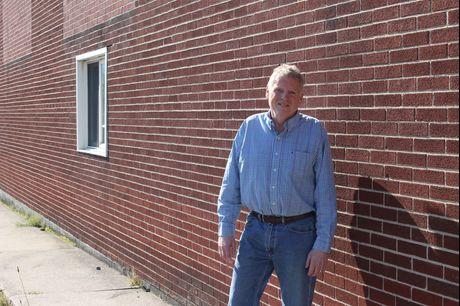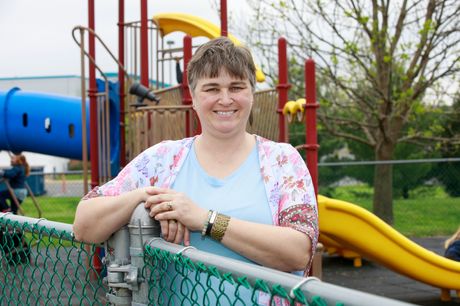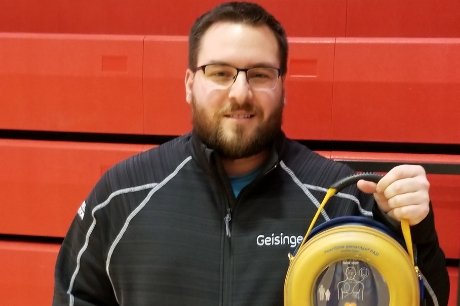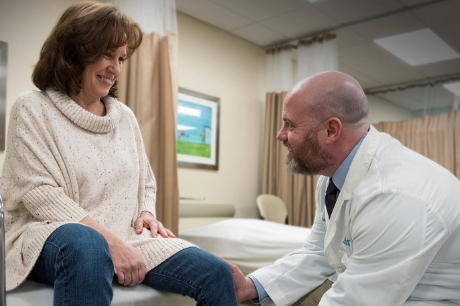Back to work 5 days after reverse total shoulder replacement
What Bob Lepley thought of as just a pain in his shoulder led to a reverse total shoulder replacement
“I didn’t think anything of it,” says Bob Lepley of Lewistown. The 64-year-old had been working on a home project when a drill press tipped over, causing him to fall and land on his shoulder about a year ago. “I got up and shook it off. I figured it would take a while to heal.”
Several weeks later when Bob had his annual visit with his primary care doctor, Dr. Raymond Nungesser, at Geisinger’s Family Practice clinic in Lewistown, Dr. Nungesser noticed something that just didn’t seem right. “He looked at me funny and asked if I had had any falls lately,” recalls Bob. A quick exercise proved Dr. Nungesser was right – Bob’s left arm was weakened by the injury to his shoulder.
X-ray reveals rotator cuff tear
Bob was sent to Geisinger Gray’s Woods in State College for imaging and to meet with Dr. Hithem Rahmi, a board-eligible and fellowship-trained orthopaedic shoulder/elbow and sports medicine specialist.
“When he showed me the X-ray, I knew something was wrong,” says Bob. “I’m in the electrical business, and I know where conduits and wires go – things didn’t look like they were where they should be.”
Dr. Rahmi diagnosed Bob with a torn rotator cuff, which is a tear in the muscles and tendons surrounding the shoulder joint that keep the upper arm bone in the shoulder socket. It’s a common injury – nearly 2 million people in the United States visit their doctor each year related to rotator cuff issues.
Symptoms of a rotator cuff tear:
• Pain when at rest and when lying on affected shoulder
• Pain when moving arm up or down
• Weakness when lifting or rotating arm
• Cracking sensation when moving shoulder in certain positions
Irreparable muscle leads to reverse total shoulder replacement
An MRI and arthroscopic evaluation revealed that Bob’s subscapularis tendon was torn beyond repair. He was scheduled for a reverse total shoulder replacement, also called a reverse arthroplasty. This procedure differs from a normal shoulder replacement because it relies on different muscles, rather than the rotator cuff, to move the shoulder.
Candidates for reverse total shoulder replacement may have:
• An irreparable rotator cuff tear
• A previously unsuccessful shoulder replacement
• A chronic shoulder dislocation
• A shoulder joint tumor
• Severe shoulder pain and difficulty lifting arm over your head or away from your side
• Exhausted other treatments for pain such as rest, medications, cortisone injections and physical therapy
Bob says everything went well during his surgery. In fact, he was back to work as an electrical contractor just five days later, albeit in a sling.
Bob says it was Dr. Rahmi’s personality that made him feel more at ease about having surgery. “He made me feel like I was the only person he dealt with,” says Bob. “I wasn’t afraid of anything. He really cared.”
Next steps:
Find an orthopaedic specialist
Learn more about orthopaedics and sports medicine
Make an appointment with Hithem Rahmi, DO





